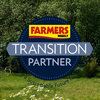Bar Tech Summer 2021
Welcome to the latest BarTech with thoughts, tops tips and advice from the UK Grass Experts on grass and herbal leys for livestock, arable and the environment.

Welcome to the latest BarTech with thoughts, tops tips and advice from the UK Grass Experts on grass and herbal leys for livestock, arable and the environment.
Herbal leys are grasslands made up of legume, herb and grass species and can be sown on arable and horticultural land, vegetable fields and temporary grassland. Herbal leys easily fit into arable and mixed farming rotations.
You can increase the diversity of forage and reduce the need for supplements. Diverse forage includes:
Herbal leys:
Grass & herbal leys at Groundswell


As a key member of the The Farmers Weekly Transition Partner...
As a key member of the The Farmers Weekly Transition Partner Network, Barenbrug UK is part of a selected, UK-wide community of farmers, industry stakeholders and influencers working together to secure a sustainable future for your farm business.
Appropriate pH allows for better soil health. Healthy soils have a more diverse ecosystem of flora and fauna and are more efficient at cycling nutrients and have the potential to sequester more carbon. Healthy soils promote healthier plants and higher yields which in turn promotes healthier livestock and improved production.
The global demand for food is continuing to increase but so is the demand for setting areas aside for public good. Keeping grass young and productive makes the operation much more efficient. A productive, efficient system automatically has less waste and low waste is a sign of lower environmental impact. If we can produce more food from the same area. We will satisfy the demand for food whilst allowing other areas to be used for public good.


Lucerne, one of the most underrated and underutilised, highly...
Lucerne, one of the most underrated and underutilised, highly nutritious forage crops available to livestock farmers in the UK. It combines good digestibility with high proteins providing excellent milk yields or daily live weight gains. Barenbrug Artemis' unique innovative seed enhancement coating, Yellow Jacket Nitrogenerator®, makes growing lucerne much easier.

With harvest well underway across the UK our network of farmer partners, covering over 3,000ha, have also been busy harvesting grass for seed alongside their cereal harvests.
Across the agriculture varieties, the network have harvested most of our Italian & Hybrid species and have made a start on the Intermediate Diploid varieties. The localised rains are causing issues in harvesting but the weather next week looks more settled so we expect to make better progress. The lack of sunshine during the key growing season has meant yields are average but we expect to see a strong final yield for harvest 2021.
Autumn re-seeding
Hold your reseeds in the same esteem as heifers or ewe lambs; they are the future of your farm’s production
Autumn reseeding has been and continues to be very popular in the UK as the soil and air temperatures remain high and generally cool down at a steady rate. There is also a much-reduced risk of drought...
Discover our range of grass, forage, clover, herb and legume mixtures for the agriculture sector.
Discover our range of grass, forage, clover, herb and legume mixtures for the agriculture sector.
Discover our range of grass, forage, clover, herb and legume mixtures for the agriculture sector.